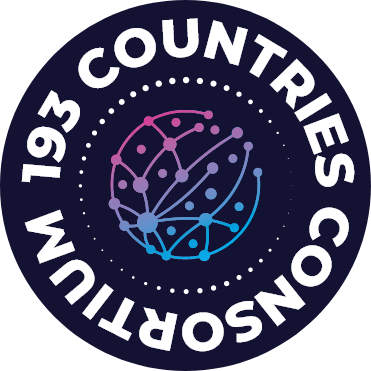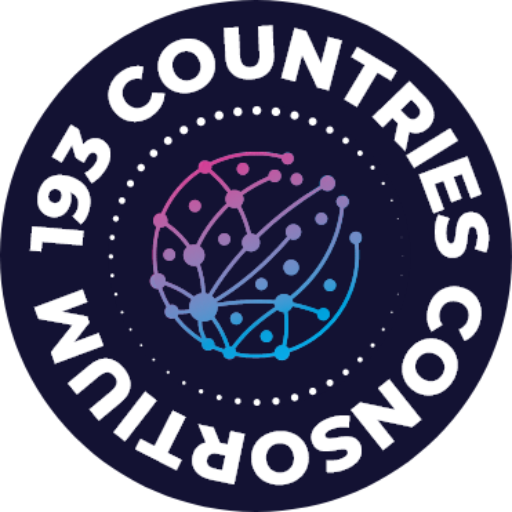- Home
- Billionaires
- Investing Newsletters
- 193CC 1000
- Article Layout 2
- Article Layout 3
- Article Layout 4
- Article Layout 5
- Article Layout 6
- Article Layout 7
- Article Layout 8
- Article Layout 9
- Article Layout 10
- Article Layout 11
- Article Layout 12
- Article Layout 13
- Article Layout 14
- Article Sidebar
- Post Format
- pages
- Archive Layouts
- Post Gallery
- Post Video Background
- Post Review
- Sponsored Post
- Leadership
- Business
- Money
- Small Business
- Innovation
- Shop
Recent Posts
Alice Walton: A Life of Wealth, Art, and Philanthropy

Alice Walton, one of the wealthiest women in the world, has carved a distinct path that sets her apart from her more business-focused siblings. As the daughter of Sam Walton, the founder of Walmart, Alice inherited immense wealth but chose to channel her influence primarily through art, philanthropy, and healthcare. Her life is a testament to how privilege can be used in pursuit of cultural enrichment and societal improvement, diverging from the conventional narrative of corporate leadership.
Born on October 7, 1949, in Newport, Arkansas, Alice Louise Walton was the youngest of four children. Her early life was relatively quiet, spent in the small towns of Arkansas as her father built the foundations of Walmart, which would eventually grow into the largest retail corporation in the world. While her siblings, particularly Rob Walton and Jim Walton, took more direct roles in the family business, Alice followed her interests in art and culture.
She attended Trinity University in San Antonio, Texas, where she studied economics and finance, earning a degree that prepared her for a career in investment. Early in her professional life, Alice worked as an equity analyst and money manager for First Commerce Corporation. She also held positions at Arvest Bank Group and founded her own investment bank, Llama Company, in 1988. The firm allowed her to deepen her involvement in financial services, and she became known for her sharp financial mind and bold investments. However, her true passion always lay elsewhere.
Alice Walton’s fascination with art began in childhood, when she was captivated by the colors and stories behind paintings. As her wealth grew, so did her art collection, eventually including works by some of the most celebrated American artists such as Winslow Homer, Georgia O’Keeffe, and Norman Rockwell. Her devotion to art culminated in the creation of the Crystal Bridges Museum of American Art in Bentonville, Arkansas, which opened in 2011.
Crystal Bridges was more than a museum; it was a cultural statement. Situated in a small town, it brought world-class American art to a region previously underserved by major cultural institutions. The museum, free to the public thanks to Walton’s philanthropy, features pieces spanning five centuries of American history. It has garnered praise not just for its impressive collection but also for its architecture and integration with the natural environment, designed by renowned architect Moshe Safdie. The museum instantly became a landmark and significantly boosted the cultural profile of the Ozarks.
Through Crystal Bridges, Alice Walton has aimed to democratize art appreciation, emphasizing that great works should not be confined to coastal metropolises or elite circles. Her efforts have challenged conventional wisdom in the art world, bringing attention to artists and movements often overlooked by mainstream institutions.
Apart from art, Walton has turned her attention to healthcare, recognizing the pressing need for improved medical systems in rural and underserved areas. In recent years, she has spearheaded initiatives aimed at rethinking and reforming American healthcare. In 2020, she announced the formation of the Whole Health Institute, a nonprofit organization designed to overhaul how healthcare is delivered and perceived, focusing on holistic and personalized care.
Building on this, she also unveiled plans for the Alice L. Walton School of Medicine, which seeks to offer a new kind of medical education centered around whole-person care, interdisciplinary collaboration, and community wellness. The school aims to train future doctors not just in traditional clinical practices, but also in the social determinants of health, nutrition, and mental well-being. Walton’s holistic vision reflects her belief in interconnectedness—between mind and body, patient and practitioner, community and system.
Despite her low public profile compared to many billionaires, Alice Walton’s influence has been substantial. She has made major contributions to both political and educational causes, albeit in a more discreet fashion. Her philanthropic strategy has largely favored transformational projects over mere charity, focusing on long-term impact rather than temporary relief. She has served on various boards and used her resources to support education reform and civic engagement.
Her life has not been without controversy or scrutiny. She has faced criticism for her immense wealth in a time of growing economic inequality, and questions have been raised about the sources and uses of that wealth. As a major shareholder of Walmart, Walton has been indirectly connected to debates over labor practices, wages, and corporate responsibility. However, her individual initiatives often diverge from the corporate ethos, leaning more toward empowerment and public benefit.
Despite these criticisms, few can deny the lasting cultural and social footprint she has created. Alice Walton’s story is not one of boardrooms or quarterly reports, but of gallery walls and community wellness centers. In a world increasingly defined by division, her work often bridges gaps—between rural and urban, rich and poor, tradition and innovation. Through her unwavering commitment to art, health, and access, she continues to influence the American landscape in deeply meaningful ways.
Now in her seventies, Alice Walton shows no sign of slowing down. Her recent projects indicate a sustained desire to challenge the status quo and to use her privilege in pursuit of public good. She remains a unique figure in the pantheon of American billionaires: one who operates largely outside the limelight, yet whose impact reverberates in cultural and humanitarian arenas across the country.
Her journey illustrates the power of intentional wealth—wealth that doesn’t just accumulate but circulates, catalyzes, and uplifts. Alice Walton may have inherited a fortune, but she has earned a legacy.
- Alice L. Walton School of Medicine
- Alice Walton
- American art
- American billionaire
- American collectors
- American heritage
- American innovators
- American museums
- Arkansas culture
- Art Accessibility
- art museum founder
- art patron
- billionaire philanthropists
- Community Engagement
- Crystal Bridges Museum
- cultural equality
- cultural transformation
- Economic Empowerment
- female investors
- female philanthropists
- financial services
- healthcare reform
- holistic medicine
- inclusive museums
- innovative philanthropy
- investment banking
- Llama Company
- Medical Education
- modern philanthropists
- Moshe Safdie architecture
- nonprofit leadership
- private collectors
- public art access
- quiet philanthropy
- rural America
- Rural Healthcare
- Sam Walton daughter
- Social Impact
- Southern art
- Trinity University alumni
- U.S. healthcare
- Walmart heiress
- Walmart legacy
- Walton family
- wealth and culture
- wellness advocates
- Whole Health Institute
- women in business
- women's impact
Recent Posts
Categories
- 193 Countries Consortium Partner1
- 193cc Digital Assets2
- 5G1
- Aerospace & Defense48
- AI37
- Arts3
- Banking & Insurance11
- Big Data3
- Billionaires1,279
- Boats & Planes1
- Business332
- Careers13
- Cars & Bikes79
- CEO Network1
- CFO Network17
- CHRO Network1
- CIO Network1
- Cloud10
- CMO Network18
- Commercial Real Estate7
- Consultant1
- Consumer Tech194
- CxO1
- Cybersecurity73
- Dining1
- Diversity, Equity & Inclusion4
- Education7
- Energy8
- Enterprise Tech29
- Events11
- Fintech1
- Food & Drink2
- Franchises1
- Freelance1
- Future Of Work2
- Games149
- GIG1
- Healthcare79
- Hollywood & Entertainment203
- Houses1
- India’s 1000 Richest1
- Innovation46
- Investing2
- Investing Newsletters4
- Leadership65
- Lifestyle11
- Manufacturing1
- Markets20
- Media327
- Mobile phone1
- Money13
- Personal Finance2
- Policy569
- Real Estate1
- Research6
- Retail1
- Retirement1
- Small Business1
- SportsMoney42
- Style & Beauty1
- Success Income1
- Taxes2
- Travel10
- Uncategorized13
- Vices1
- Watches & Jewelry2
- world's billionaires1,248
- Worlds Richest Self-Made Women2
Related Articles
Rob Walton & Family: The Legacy of Wealth, Influence, and Philanthropy
Rob Walton, formally known as Samuel Robson Walton, is a prominent American...
By 193cc World's BillionairesApril 30, 2025The Quiet Billionaire: The Life of Jim Walton
Jim Walton, the youngest son of Walmart founder Sam Walton, is a...
By 193cc World's BillionairesApril 30, 2025Julia Koch & Family: A Life of Influence, Wealth, and Philanthropy
Julia Koch, one of the wealthiest women in the world, has led...
By 193cc World's BillionairesApril 30, 2025The Life and Legacy of Charles Koch & Family
Charles Koch, the American businessman and philanthropist, has long been a central...
By 193cc World's BillionairesApril 30, 2025













Leave a comment